A Complete Butterfly Life on a Single Day
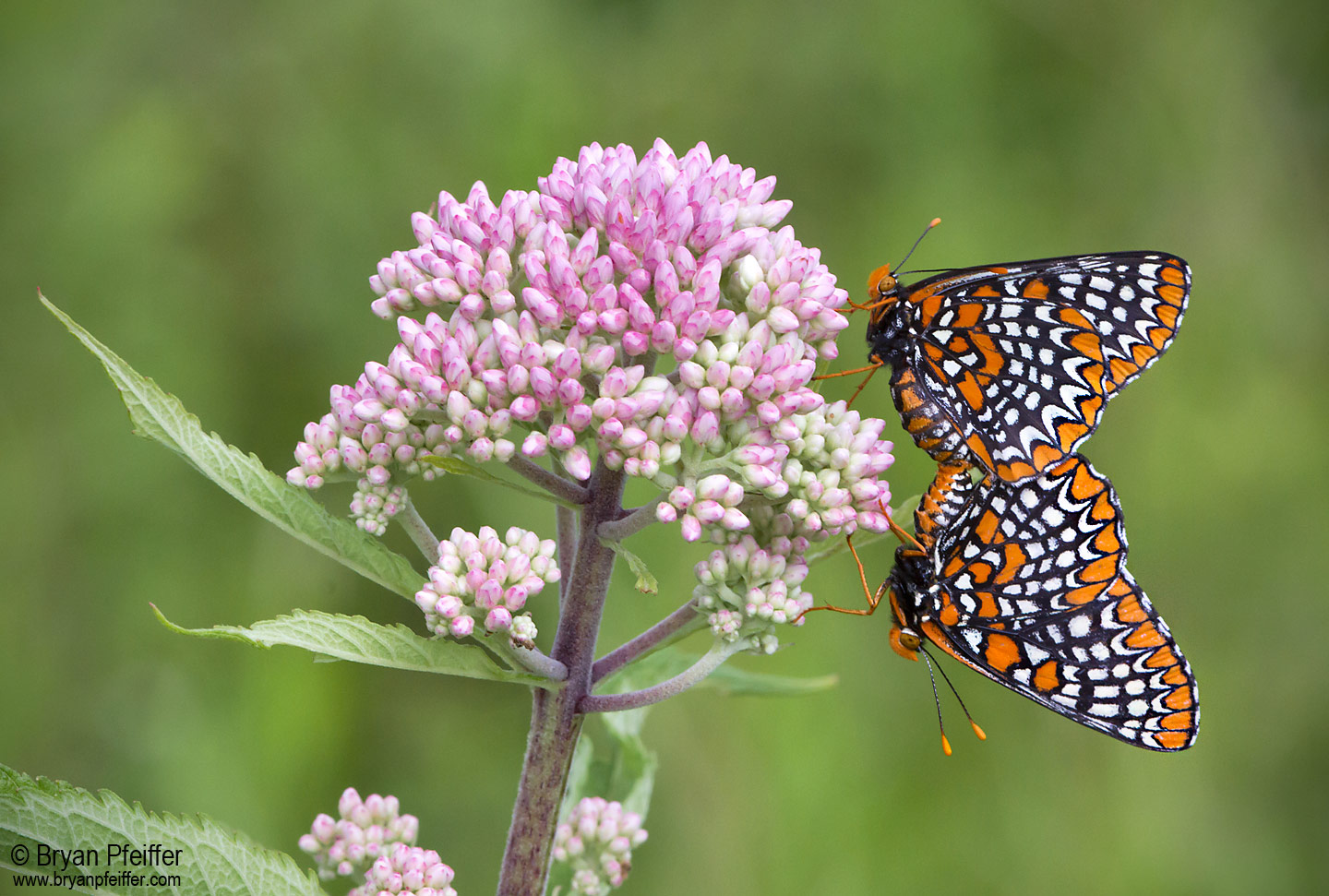
The cycle begins with a copulation. That essential act of reproduction is the starting point for an unusual annual cycle on display on a single day: From a wet meadow in East Montpelier, Vermont, I photographed Baltimore Checkerspots (Euphydryas phaeton) in every stage of life: egg, caterpillar (larva), chrysalis (pupa), and adult.
Rarely do we see all these stages together at a single site. Sure, we see adult female butterflies laying eggs on their host plants. (Baltimore Checkerspots use Turtlehead [Chelone glabra] and a surprising diversity of other unrelated plants.) So finding adults and eggs together is nothing unusual. We might also see early-instar (tiny) caterpillars newly hatched from those eggs. But by the time those caterpillars feed and grow (for a month or so), and then pupate to form a chrysalis, many of the adults have died after their fling on the wing. So it’s often hard to see all the stages together.
Baltimore Checkerspot is a bit odd. Instead of overwintering—like many butterfly species—as egg or pupa, the Baltimore spends the winter as a caterpillar. By early autumn, the caterpillars I saw yesterday will stop feeding, drop to the earth near the base of their food plant, and overwinter in the leaf litter in a state of diapause. Next spring they’ll rouse to resume feeding, pupate, then emerge in late June or so to fly as adults, mate, and start the cycle again.
This odd cycle, I suspect, extends the period we see caterpillars among the other life stages. Or maybe this site in East Montpelier is simply so busy with Baltimores (swarms of them) that it’s easy to find all the life stages together. Whatever the case, enjoy the orange parade, starting with that mating pair above, and then below progressing from egg to larva to chrysalis to two final shots of an adult, which I photographed from above and below.

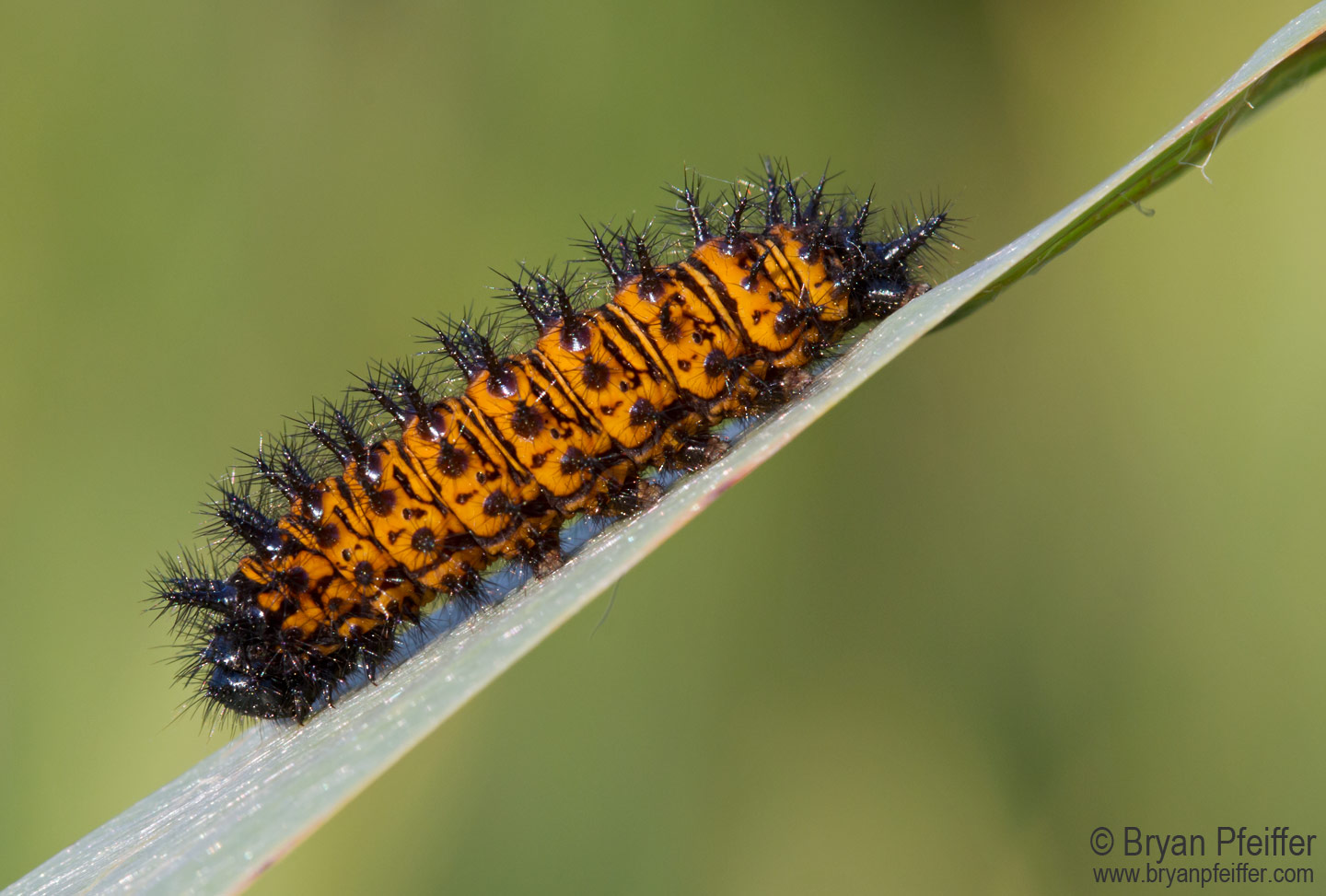
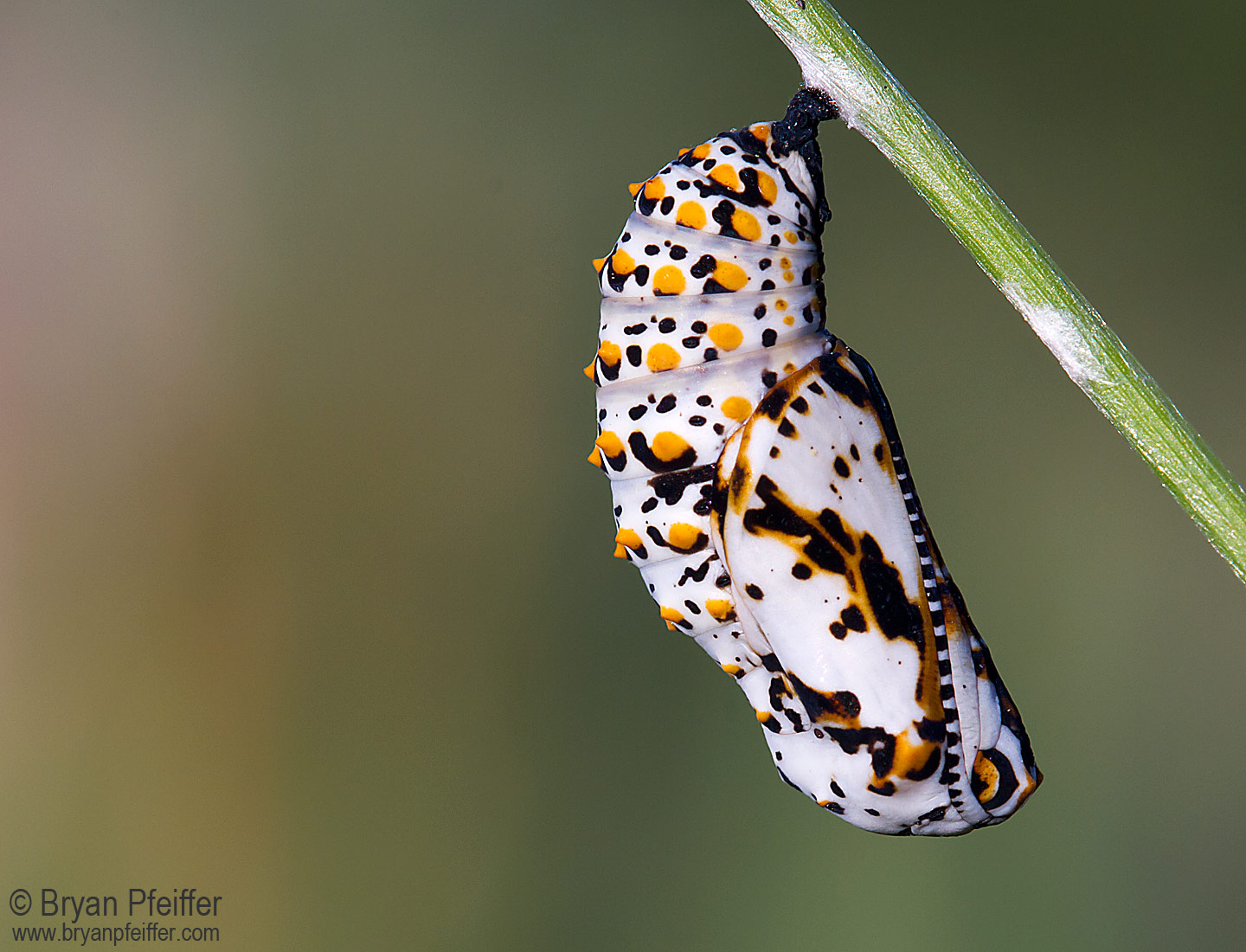
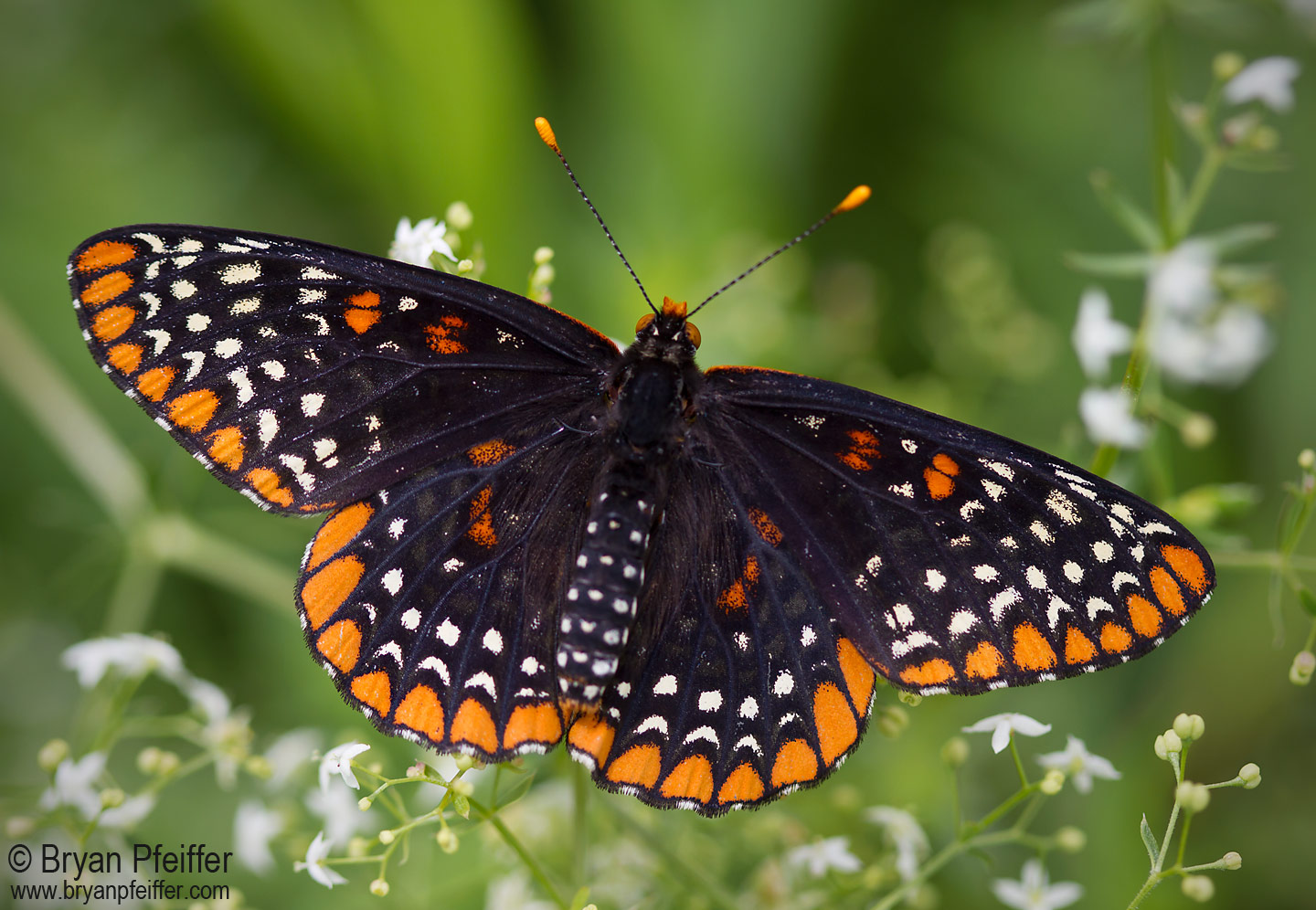
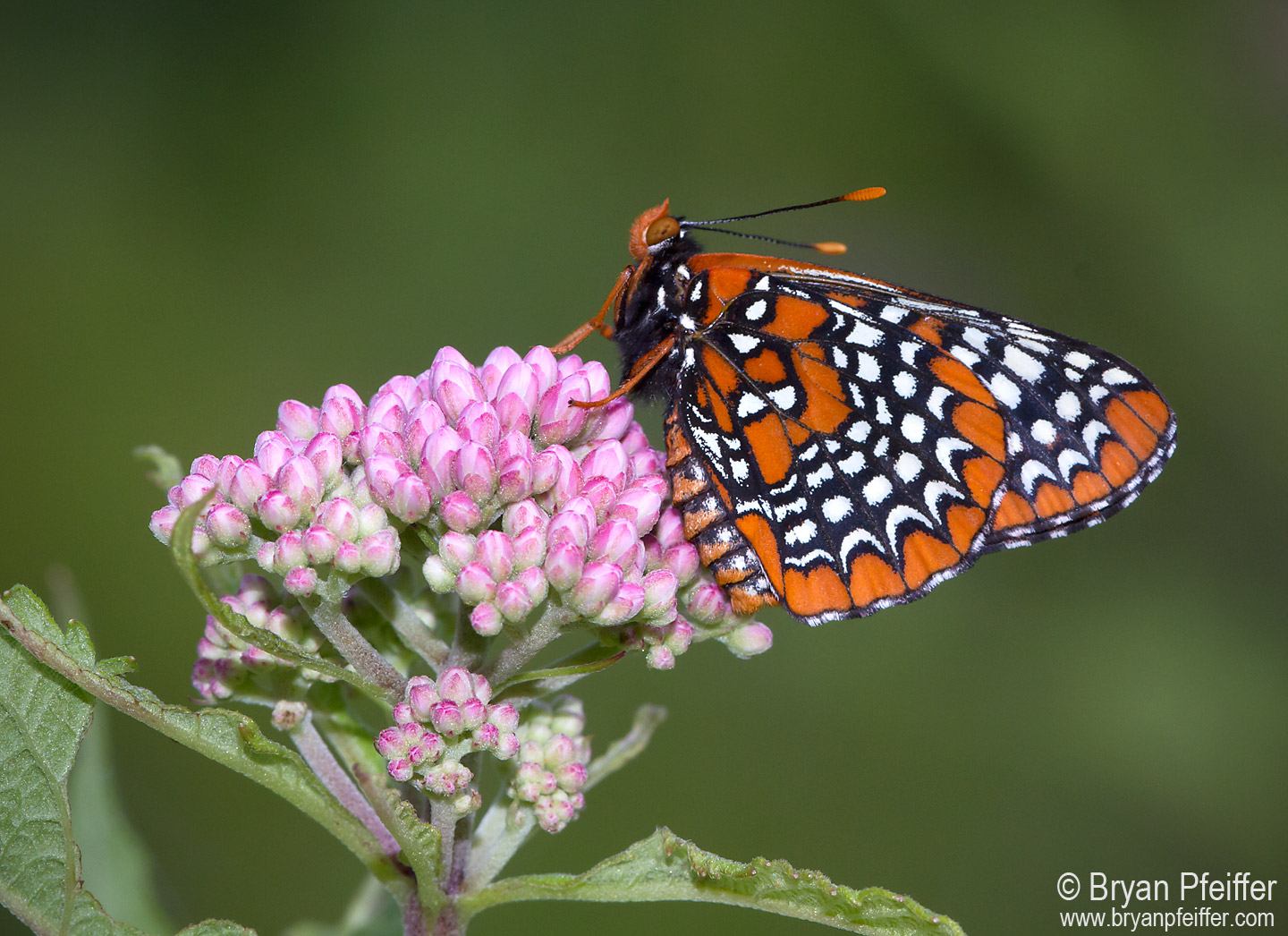

Ordering my Turtelhead seeds now!
Thanks, Barb!
Thanks, Michael. Yeah, what an amazing bug.
Thanks, Gayle!
Thanks, Michael. Can’t go wrong with that butterfly!
Fantastic, and well done with the photos.
Gorgeous photography and awesome learning experience! Wish I could have been there to experience in person. Looking forward to more posts!
Late appearing caterpillars are often a sign of parasitization by a species of wasp. Baltimore Checkerspots seem to be particularly prone to this. http://dnr2.maryland.gov/wildlife/Documents/2013_Plan_ConservationBaltimoreCheckerspot.pdf
So exciting! I have never seen these butterflies. Thank you.
Hi Bryan, I always love to read and learn from your info about the subject. I especially enjoy your side comments, which let me know this is definitely Bryan!!
Can’t go wrong with these bugs. We also saw my prime target — Satyrium acadia!
Hope you get to see some, Barbara!
They are indeed shocking and beautiful. Thanks, Patrice!
Thanks, Sandy. I can think of few other things I’d rather do in mid July than spend a morning in a wet meadow with these butterflies. (Glad the yellowthroats are well-fed!)
Thanks, Ginny. Yes, I myself like a bit of diapause now and then — maybe with a good book on a rainy day. 🙂
Stunning photographs, Bryan! I admit I know a quite a bit about birds, quite a bit less about dragonflies, but very little about butterflies. Therefore, I learned a new word today thanks to you – diapause. Fascinating article along with the spectacular photos added up to a great post. Now I’m off to read more about my newly learned word!
love the chrysalis especially – looks like there was another attachment point on the same stem…willing to reveal where exactly in E. Mplr
????
What an amazing day you had Bryan! Thank you for sharing your great photos and story with all of us! I just came back inside after photographing a pair of Common Yellowthroats! They were gathering food for youngsters!
Thanks for those beautiful Checkerspot butterfly. I
Saw one in our meadow the other day and couldn’t identify it. Thanks again!
Wonderful, Bryan! Great to see!
Wonderful! Thank you for posting.